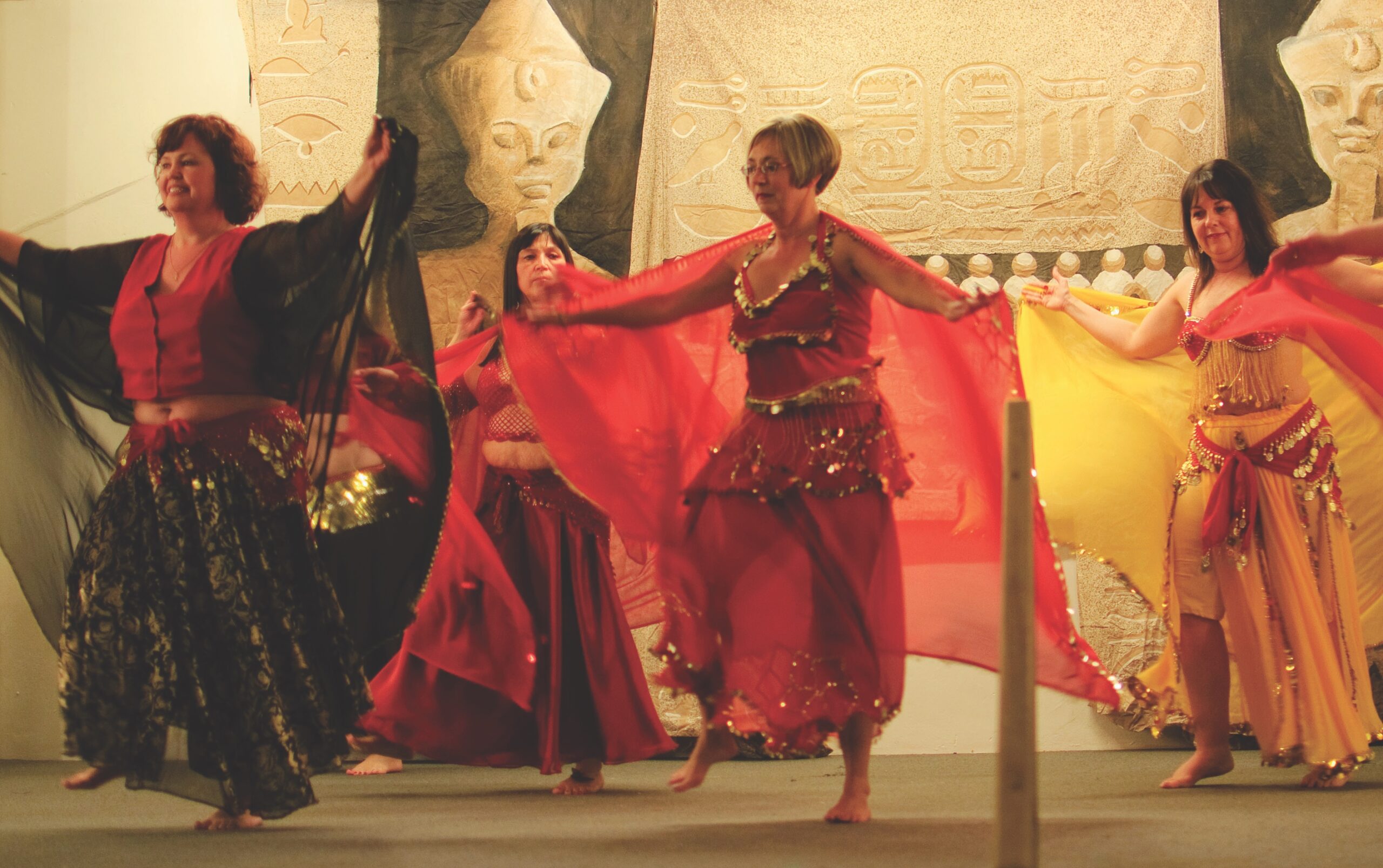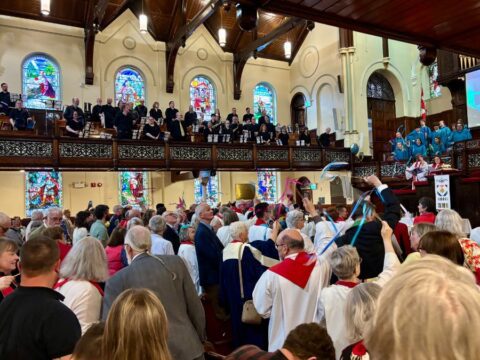Years ago, Rob Stewart was touring the Maritimes for his job with Scouts Canada. He visited an Anglican church in Yarmouth, N.S., where a frustrated priest waved him over to the church hall and said it was now the Scouts’ hall. The congregation could not use it since the Scouts had the keys. None of the Scouts or their leaders attended the church. The situation had developed not out of animosity or with the intent of a takeover, but simply through years of poor communication. Stewart quickly retrieved the keys for the priest, and the Scouts and the congregation started interacting more.
Contrast this to another church in the Maritimes, United Memorial in Halifax, where Rev. Catherine MacDonald not only welcomes a belly dancing group into the church — she dances with them. Thanks to this bond with a community group, the congregation has enjoyed liturgical dance in their worship services, performed by the dance teacher. This summer, the relationship grew stronger as MacDonald officiated at the marriage of one of her fellow dancers. “It was a really nice connection to make, between a formal ritual of the church and an outside group renting our facilities,” she says.
Many congregations open their doors to various community activities, from orchestra rehearsals to Zumba lessons, but they don’t always interact with those using their building. How can churches reach out to these groups? We asked a few congregations what works, and how they build a strong community within church walls.
It starts with communication.
And communication is always easier when two people know each other. The congregation at Port Nelson United in Burlington, Ont., has always enjoyed a close relationship with the Scouts and Girl Guides who meet in their building. The church invites them to a special worship service every year, and minister Rev. Michael Brooks does a yearly devotional at one of the meetings. “We’ve always seen Scout and Guide groups as part of the church,” Brooks says. Some of the children and leaders are part of the congregation.
Stewart, now executive director of program services at Scouts Canada, says there is always a place for the minister or a member of the congregation on their local group planning committee. “There is certainly an advantage for the church to actively engage in the activities of the group. In fact, it is their right. They are providing, at minimum, a place for the group to meet.”
Brooks advises making a connection with a group by starting with one event. A shared welcome-back barbecue in September or a one-time service including members of the group could help develop personal relationships without the burden of a long-term commitment to regular shared activities. “Our one-time events add up over the course of the year to create an ongoing relationship,” Brooks says.
The next task? Make expectations clear.
“Whenever you have a variety of groups of a variety of sizes using the building at a variety of times, there are always going to be issues that come up,” Brooks admits. Perhaps someone didn’t turn a light off or put the furniture back in place — these things happen. Make expectations clear at the beginning to avoid jeopardizing a good relationship. At Port Nelson, all groups, regardless of whether they pay rent or not, sign a contract and provide proof of insurance.
Groups also need to be self-sufficient when it comes to set-up and clean-up. To do this, they have to be told things, like where to find the broom closet or how the dishwasher works. For example, at United Memorial, a furniture map is posted in each room so the belly dancers and other groups know where everything should go after a rehearsal or a meeting.
Another key issue: Be gracious.
A Korean congregation recently began to worship on Sunday afternoons at Fort Garry United in Winnipeg. Both congregations are getting to know one another as best they can despite language difficulties. “I’ll be sitting in my office, and someone from their congregation will show up and bow and bring in some watermelon for me,” says Rev. Gordon Taylor. In turn, the Fort Garry congregation has invited the Korean congregation to join them for coffee between services, and it makes sure there is extra coffee so the Korean worshippers can have some after their service too. “We are trying to be gracious to each other. It is in the exchanges of grace that we are beginning to establish the relationship,” Taylor says.
At Fort Garry, groups using the building can find information about church activities and events “lying around everywhere,” Taylor says. Welcoming bulletin boards decorated with notices for upcoming events are posted around the building. Staff members have also taken down a multitude of negative little signs that said things like “Please don’t let water run for longer than five minutes,” preferring to communicate instructions in person.
They also make a point of welcoming people in the halls — “loitering with intent,” as Taylor puts it. “We know groups are going to be around, so we make a point of meeting the leaders as they come in,” he says. However, a brief hello is fine — respect that someone there to do taekwondo is not looking for a sermon. “We just try to establish a relationship in as respectful and gentle a way as they are coming for; we try not to pounce on them,” says Taylor.
MacDonald at United Memorial leaves her office door open during the day. “I have wound up having basic pastoral encounters with folk who are coming in and out of different activities. Sometimes it is their only connection with a church person,” she says. “Whether that leads anywhere or not is immaterial to me. It is an opportunity to offer God’s presence at that moment.”
Finally, find ways to help.
Congregations can support groups in a number of ways. For example, Scouts who want to earn their “religion in life” badge need help from the minister or a member of the congregation. Or perhaps the Sparks or Brownies group would like to learn about traditions in other countries from someone at the church.
Most groups need help with fundraising. Let them make an announcement in the Sunday bulletin or during worship. At Port Nelson United, Scouts sell their maple syrup and the Girl Guides sell their cookies after the church service.
Groups like Alcoholics Anonymous and Narcotics Anonymous preserve their members’ anonymity. At Fort Garry United, AA members blend in with all the other people attending the church for various events. While other groups are listed on an illuminated outdoor sign, Alcoholics Anonymous asked that their meetings not be advertised.
Welcoming local groups into your church building is really a way to reach out to the wider community. “The groups who use our building, that is part of our outreach and part of our ministry,” says Brooks. The church’s use-of-space guidelines state that the congregation has been blessed with an abundance of space and it is their policy to share that abundance. “That’s our premise for starting out,” he says.
Strengthening connections with the wider community by sharing space — and then nurturing the relationships with those you welcome in — also helps the church community grow.
“We have people who come to worship who have joined the church because of a group they have been part of that uses the building,” Brooks says. “People will associate your church with the group, so if that can be a positive association, all the better.”
***
This story first appeared in The United Church Observer’s January 2013 issue with the title “Building relationships.”














